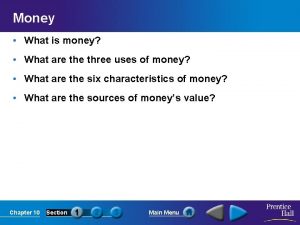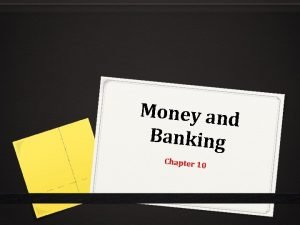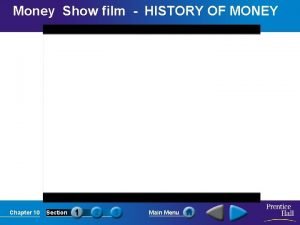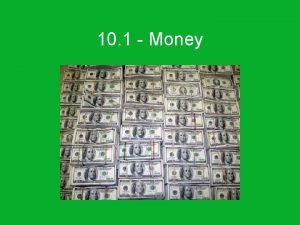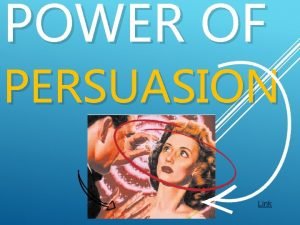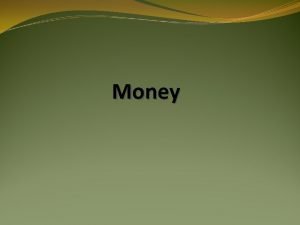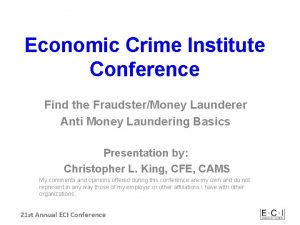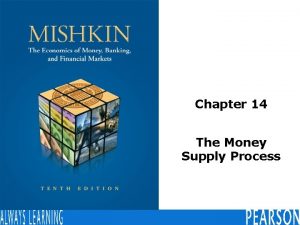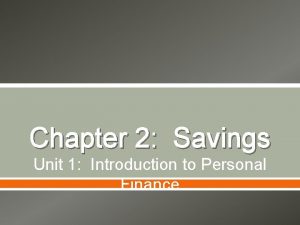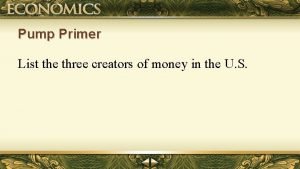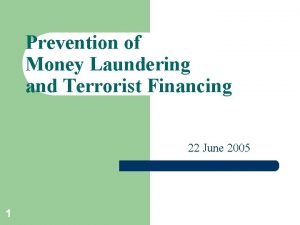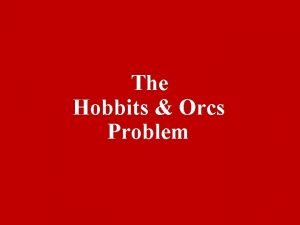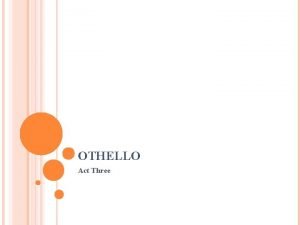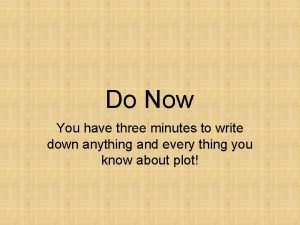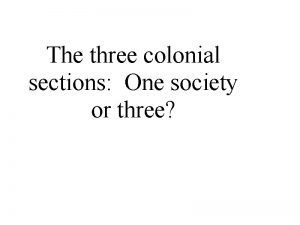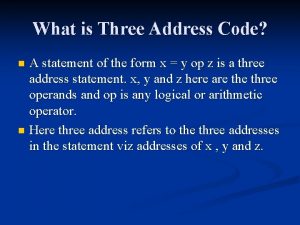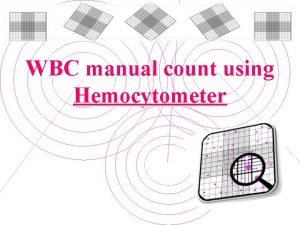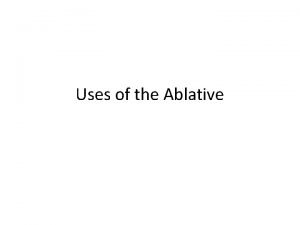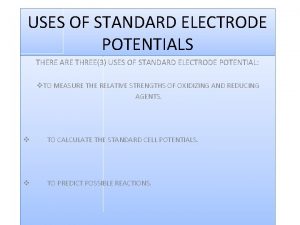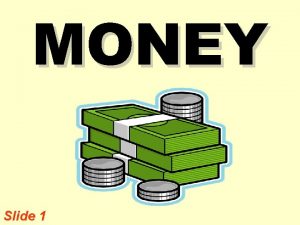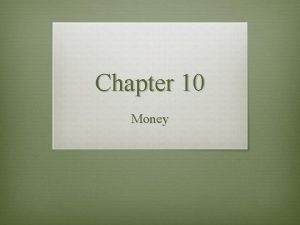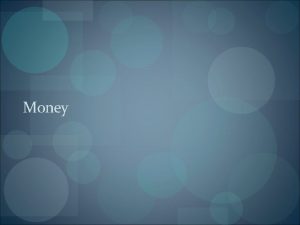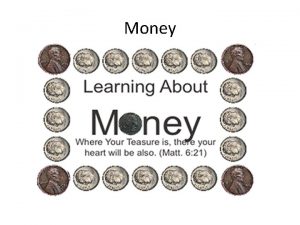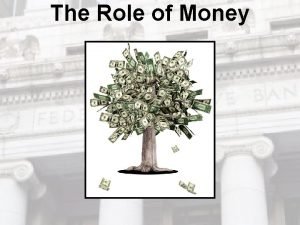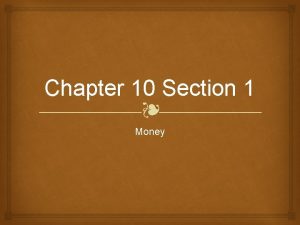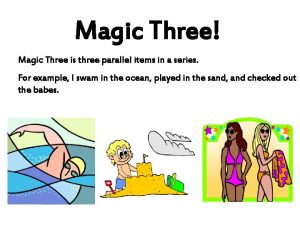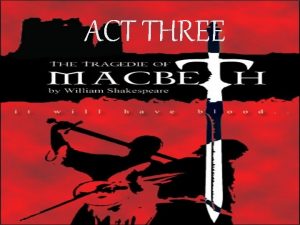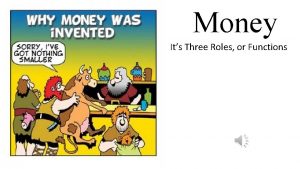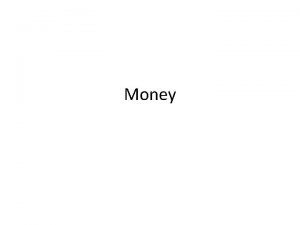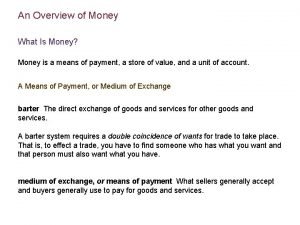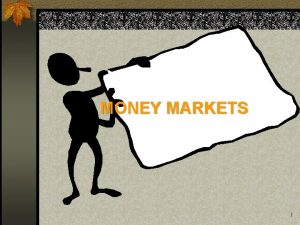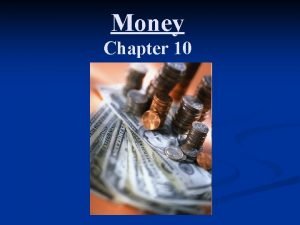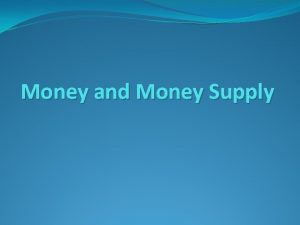Money What is money What are three uses































- Slides: 31

Money • What is money? • What are three uses of money? • What are the six characteristics of money? • What are the sources of money’s value? Chapter 10 Section Main Menu

What Is Money? Money is anything that serves as a medium of exchange, a unit of account, and a store of value. Chapter 10 Section Main Menu

The Three Uses of Money as Medium of Exchange – A medium of exchange is anything that is used to determine value during the exchange of goods and services. Money as a Unit of Account (Standard of Value) – A unit of account is a means for comparing the values of goods and services. Money as a Store of Value – A store of value is something that keeps its value if it is stored rather than used. Chapter 10 Section Main Menu

Chapter 10 Section Main Menu

Unit of Account Money serves as a means for comparing $90 $1, 595 Chapter 10 Section Main Menu

Unit of Account $8, 504 $832 Chapter 10 Section Main Menu

The Six Characteristics of Money The coins and paper bills used as money in a society are called currency. A currency must meet the following characteristics: Durability Objects used as money must withstand physical wear and tear. Portability People need to be able to take money with them as they go about their business. Divisibility To be useful, money must be easily divided into smaller denominations, or units of value. Chapter 10 Section Uniformity Any two units of money must be uniform, that is, the same, in terms of what they will buy. Limited Supply Money must be available only in limited quantities. Acceptability Everyone must be able to exchange the money for goods and services. Main Menu

Evaluating Currency Activity With a partner choose one of the following and evaluate it’s suitability as currency based on the six characteristics of money (divisibility, portability, durability, uniformity, limited supply, acceptability) • Sugar • Emeralds • Horses • Coins • Seashells • Government-issued currency Chapter 10 Section Main Menu

Example Paper Clips Portable Divisible Durable Limited Supply Acceptable Uniform Chapter 10 Section Main Menu

The Sources of Money’s Value Commodity Money Representative Money Fiat Money • • • Commodity money consists of objects that have value in themselves. Chapter 10 Section Representative money has value because the holder can exchange it for something else of value. Main Menu Fiat money, also called “legal tender, ” has value because the government decreed that is an acceptable means to pay debts.

Chapter 10 Section Main Menu

Section 1 Assessment 1. Two units of the same type of money must be the same in terms of what they will buy, that is, they must be (a) divisible. (b) portable. (c) acceptable. (d) uniform. 2. What is the source of fiat money’s value? (a) it represents the value of another item (b) government decree (c) presidential pardon (d) it is equal to the value of the stock market Want to connect to the PHSchool. com link for this section? Click Here! Chapter 10 Section Main Menu

Section 1 Assessment 1. Two units of the same type of money must be the same in terms of what they will buy, that is, they must be (a) divisible. (b) portable. (c) acceptable. (d) uniform. 2. What is the source of fiat money’s value? (a) it represents the value of another item (b) government decree (c) presidential pardon (d) it is equal to the value of the stock market Want to connect to the PHSchool. com link for this section? Click Here! Chapter 10 Section Main Menu

The History of American Banking Describe the shifts between centralized and decentralized banking before the civil war Explain how the banking system was stabilized in the later 1800’s What developments occurred in banking during the twentieth century? Chapter 10 Section Main Menu

Vocabulary Bank – an institution for receiving, keeping, and lending money Bank Run – Widespread panic in which a great number of people withdraw money Chapter 10 Section Main Menu

Chapter 10 Section Main Menu

• The Federal Reserve Act of 1913 created the Federal Reserve System. The Federal Reserve System served as the nation’s first true central bank. (Also known as the “Fed”) Chapter 10 Section Main Menu

Great Depression A severe economic decline that began in 1929 and lasted for more than a decade Causes: • During the 20’s banks loaned large sums of money to many high risk businesses • Farmers were unable to pay back loans due to crop failures and hard times on farms • Stock Market crashed and caused widespread bank runs, thousands of banks failed Chapter 10 Section Main Menu

Video: Bank Runs Chapter 10 Section Main Menu

Chapter 10 Section Main Menu

Banking in the Twentieth Century The Banking Act of 1933 created the Federal Deposit Insurance Corporation (FDIC). Today, the FDIC insures customers’ deposits up to $100, 000. ** The nation was also taken off of the gold standard. **This was changed in 2008 to $250, 000 Chapter 10 Section Main Menu

Banking Today • How do economists measure the U. S. money supply? • What services do banks provide? • How do banks make a profit? • What are the different types of financial institutions? • How has electronic banking affected the banking world? Chapter 10 Section Main Menu

Measuring the Money Supply M 1 M 2 • M 1 consists of assets that have liquidity, or the ability to be used as, or easily converted into, cash. • M 2 consists of all of the assets in M 1, plus deposits in savings accounts and money market mutual funds. • Components of M 1 include all currency, traveler’s checks, and demand deposits. • A money market mutual fund is a fund that pools money from small investors to purchase government or corporate bonds. • Demand deposits are the money in checking accounts. The money supply is all the money available in the United States economy. Chapter 10 Section Main Menu

Chapter 10 Section Main Menu

Fractional Reserve System – a banking system that keeps only a fraction of funds on hand lends out the remainder Chapter 10 Section Main Menu

Banking Services • Banks perform many functions and offer a wide range of services to consumers. Storing Money Banks provide a safe, convenient place for people to store their money. Credit Cards Banks issue credit cards — cards entitling their holder to buy goods and services based on each holder's promise to pay. Saving Money Four of the most common options banks offer for saving money are: 1. Savings Accounts 2. Checking Accounts 3. Money Market Accounts 4. Certificates of Deposit (CDs) Loans By making loans, banks help new businesses get started, and they help established businesses grow. Mortgages A mortgage is a specific type of loan that is used to purchase real estate. Chapter 10 Section Main Menu

How Banks Make a Profit • The largest source of income for banks is the interest they receive from customers who have taken loans. • Interest is the price paid for the use of borrowed money. How Banks Make a Profit Money leaves bank Money enters bank Interest and withdrawals to customers Deposits from customers Interest from borrowers BANK Fees for services Bank retains required reserves Chapter 10 Section Main Menu Money loaned to borrowers: • business loans • home mortgages • personal loans Bank’s cost of doing business: • salaries • taxes • other costs

Types of Financial Institutions • Commercial Banks – Commercial banks offer checking services, accept deposits, and make loans. • Savings and Loan Associations – Savings and Loan Associations were originally chartered to lend money for home-building in the mid-1800 s. • Savings Banks – Savings banks traditionally served people who made smaller deposits and transactions than commercial banks wished to handle. • Credit Unions – Credit unions are cooperative lending associations for particular groups, usually employees of a specific firm or government agency. • Finance Companies – Finance companies make installment loans to consumers. Chapter 10 Section Main Menu

Electronic Banking The role of computers in banking has increased dramatically. Automated Teller Machines (ATMs) Customers can use ATMs to deposit money, withdraw cash, and obtain account information. Debit Cards Debit cards are used to withdraw money directly from a checking account. Automatic Clearing Houses (ACH) An ACH transfers funds automatically from customers' accounts to creditors' accounts. Home Banking Many banks allow customers to check account balances and make transfers and payments via computer. Stored Value Cards Stored value cards are embedded with magnetic strips or computer chips with account balance information. Chapter 10 Section Main Menu

Section 3 Assessment 1. The money supply of the United States is made up of which of the following? (a) M 1 (b) M 1 and parts of M 2 (c) all the money available in the economy (d) all the money available in the economy plus money that the country could borrow 2. Why are funds in checking accounts called demand deposits? (a) they are available whenever the depositor demands them by writing a check (b) they are not liquid (c) they are usually in great demand (d) they are held without interest by the bank Want to connect to the PHSchool. com link for this section? Click Here! Chapter 10 Section Main Menu

Section 3 Assessment 1. The money supply of the United States is made up of which of the following? (a) M 1 (b) M 1 and parts of M 2 (c) all the money available in the economy (d) all the money available in the economy plus money that the country could borrow 2. Why are funds in checking accounts called demand deposits? (a) they are available whenever the depositor demands them by writing a check (b) they are not liquid (c) they are usually in great demand (d) they are held without interest by the bank Want to connect to the PHSchool. com link for this section? Click Here! Chapter 10 Section Main Menu
 Mikael ferm
Mikael ferm Money money money team
Money money money team What are the three uses of money
What are the three uses of money 3 uses of money
3 uses of money The three uses of money
The three uses of money What are the 3 uses of money
What are the 3 uses of money Site:slidetodoc.com
Site:slidetodoc.com Money smart money match
Money smart money match Money on money multiple
Money on money multiple Great gatsby historical context
Great gatsby historical context How is daisy described in the great gatsby
How is daisy described in the great gatsby She wanted three things money power and
She wanted three things money power and Money has three functions
Money has three functions Laundering stages
Laundering stages What is money multiplier formula
What is money multiplier formula Five foundations of personal finance
Five foundations of personal finance Who are the three creators of money in the united states?
Who are the three creators of money in the united states? Layering in money laundering
Layering in money laundering What is money multiplier formula
What is money multiplier formula Orc and hobbit problem
Orc and hobbit problem Othello act 3 summary
Othello act 3 summary In three minutes write
In three minutes write Orange, diamond-shaped signs warn the motorist of:
Orange, diamond-shaped signs warn the motorist of: The three colonial sections-one society or three
The three colonial sections-one society or three Three address statement
Three address statement Sources and uses of funds
Sources and uses of funds Semicolon
Semicolon Hot air oven
Hot air oven Chromatography uses
Chromatography uses Wbc count using hemocytometer
Wbc count using hemocytometer Latin ablative uses
Latin ablative uses Uses of standard electrode potential
Uses of standard electrode potential


